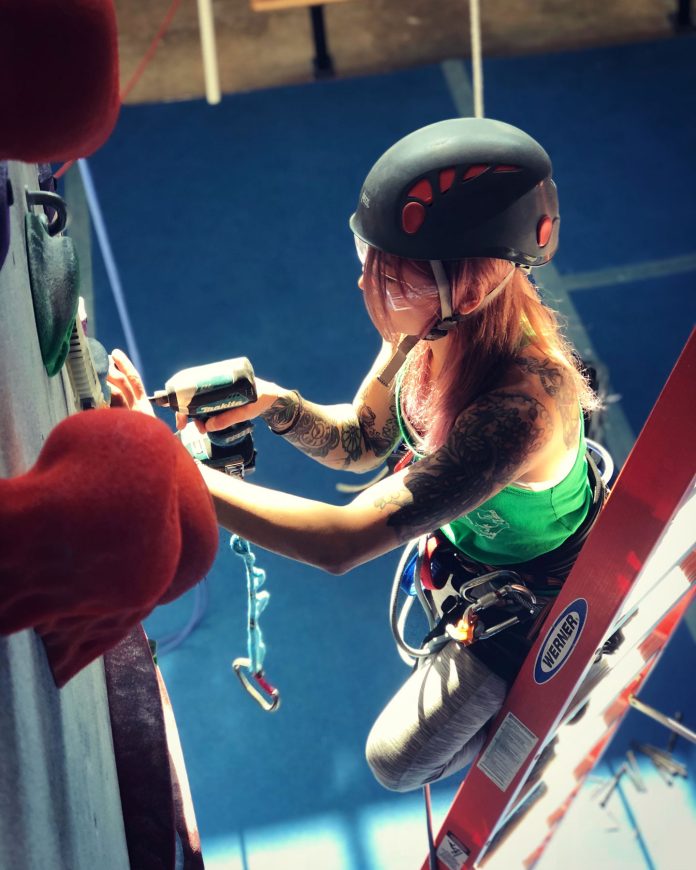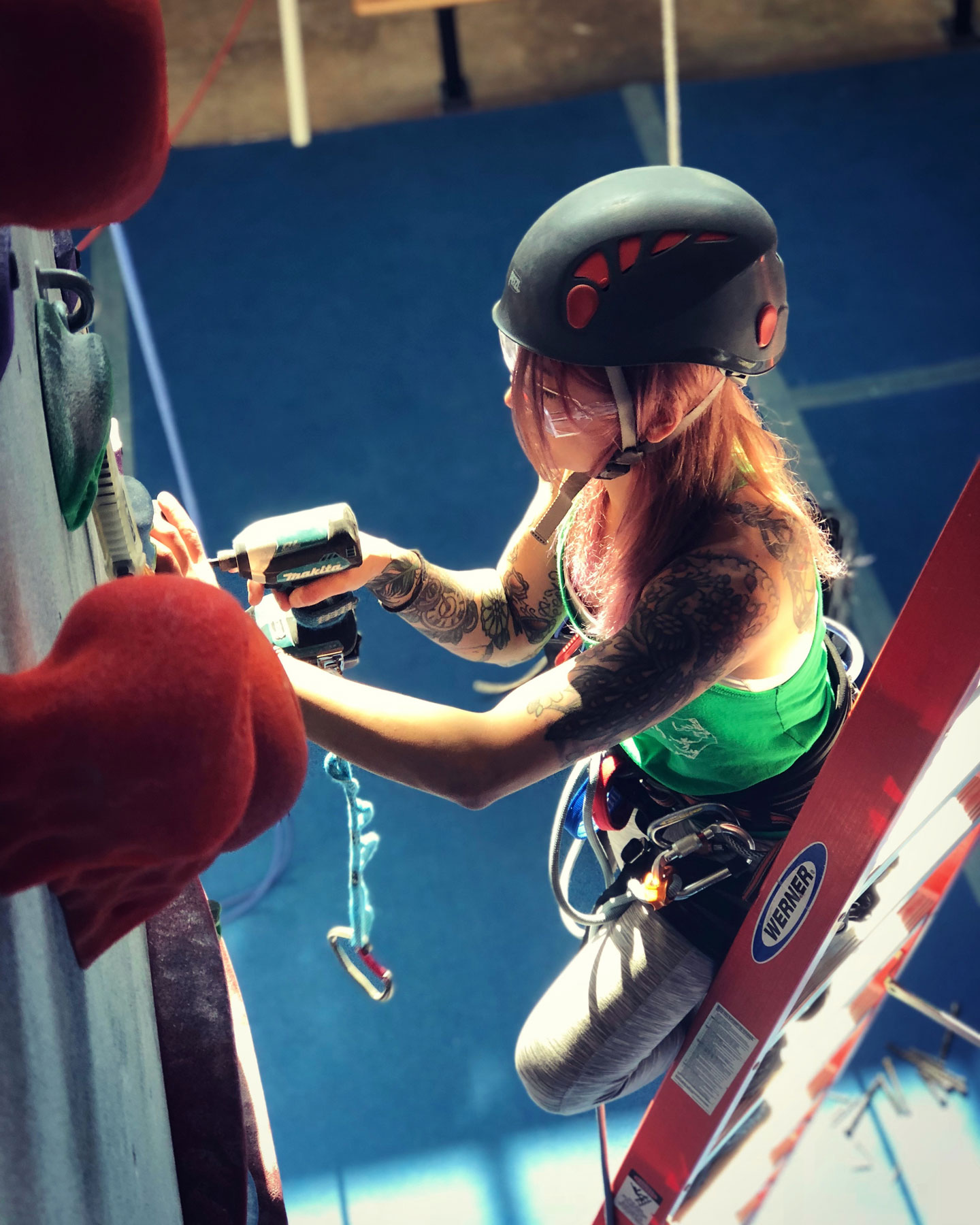
Behind the Wrench…is an ongoing series that interviews the “rock stars” of the climbing industry: the routesetters at the gyms. Carolina Fullerton is a routesetter, a mother, an artist, and a passionate advocate for the betterment of the setting industry. Fullerton found her start as a climber and setter in North Carolina before moving to Colorado and taking a job with Movement. Inspired after seeing Corbett Moe routeset, and noticing the gender disparity, Fullerton decided she was going to be part of the solution by pursuing a career in routesetting herself. We spoke to Fullerton twice, chatting once in 2022 during the third trimester of her pregnancy and then following up with her a few months postpartum.
Name: Carolina Fullerton
Title: Routesetter, Movement Boulder
Location: Boulder, Colorado
CHEN: Thank you for sitting down with me, Carolina. I wanted to interview you not only because you are a phenomenal routesetter and climber but because I have yet to find an adequate resource for how to handle pregnancy and setting in tandem. I hope we can help break down that barrier by providing some.
FULLERTON: Thank you for taking the initiative. I’m navigating by gut feeling and trial and error. I hope to be of some help to other pregnant routesetters or those considering starting a family.
To provide some context, I also searched for resources on pregnancy in labor-based professions. There are very few resources written by women.
Most labor-based professions are still dominated by men. Even though routesetting has a huge creative component, it is still a labor-based profession. I’ve found a few [resources] in the construction industry that were written by men. I’ve seen “resources” [air-quotes] with condescending tones. Questions such as, “What if she trips?” [laughs] Everybody trips.
I tripped walking into the restaurant just now. Let’s talk about the whole journey. Can you walk us through how your pregnancy changed or didn’t change the way you work as a setter?
I told my team members when I was six weeks pregnant. I was comfortable with my team; they were also my friends, so I felt comfortable telling them early. I gave my supervisors a heads up about the changes that might come my way. When you inform your team of your pregnancy should be up to the discretion of the pregnant setter. There’s no rule on this as long as you’re listening to your body and staying safe.
I stopped setting on our steepest rope terrain soon after six weeks. Steep terrain involves a lot of core and abdominal muscles; I wasn’t sure how that would affect my body. During the earliest stage of pregnancy, it’s such an unknown territory of whether you’re going to have a successful pregnancy, so I wasn’t willing to push my body to my absolute limit.
I continued setting and forerunning boulders up to my limit. I stayed alert to my body’s needs the whole time.
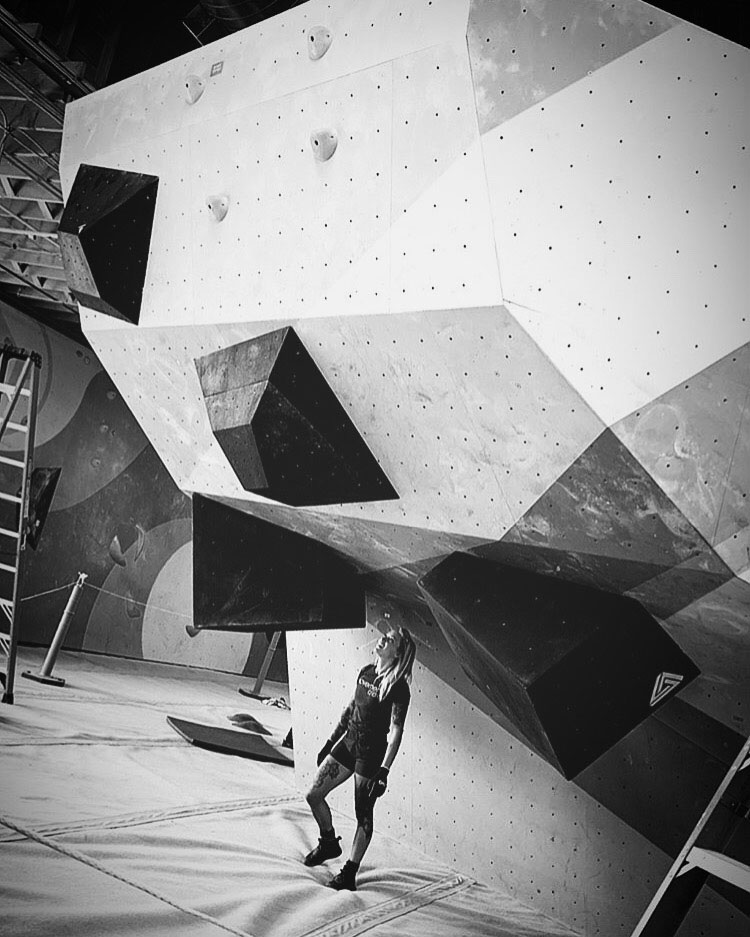
Were there differences between stages? Trimesters?
My second trimester felt great. It was like an energy boost out of nowhere. I kept up what I was normally doing, if not a little more. At the end of my second trimester, I toned down my forerunning to V6 and under to mitigate my fall risk better.
I continued to set on a rope on vertical and slab terrain pretty normally. I found a way to maneuver the harness around my belly.
Were there any equipment changes to accommodate your belly while setting on ropes?
My team gave me a top attachment to my harness. Unfortunately, it was not designed for pregnant women. It took weight off my hips and belly but redistributed it in odd places. I lost mobility in my shoulders, and the leg loops still pressed into my belly. Podium seats did not work for me either. The way it’s designed, the connection points are on either side of your belly. So, instead of trying to fit into something that wasn’t designed for pregnancy, I opted for staying on vertical or slab terrain where I could keep my feet on the wall. That meant I could relax my core and was standing up straight. I didn’t feel any pain or discomfort that way.
I always made sure I had a haul line too. After becoming pregnant, I made sure nothing was attached to me except for my drill. At the end of my second trimester, when most of my core muscles lost their usual functionality, jugging became hard. I switched to rope soloing, or sometimes had a co-worker belay me up the wall to set top-down.
And your third trimester?
Exhaustion was becoming an issue. It hits you like a brick! I stopped setting on a rope around the end of my second trimester and the beginning of my third, around seven months. When I had to loosen my harness to accommodate my belly, it was unsafe. In general, my third trimester was awesome. I was setting with another human being growing inside of me. I still climbed, still skied, just with some extra accommodations and risk mitigations. I stopped setting around eight and a half months and assisted the team by taking on other roles, such as hold washing, administrative items and organizational tasks that were related to setting but didn’t pose the same risks.
This may sound like advice for every routesetter, but if you are pregnant, pay extra attention to hydration. Before my pregnancy, a lunch and a quick snack would suffice. During my pregnancy, I would eat a snack every hour so as to not shock my blood pressure.
I would like to say that obviously what is needed will be different for everyone. Pregnancy is not a one-way street, and the progress may not always feel linear. Some women might feel safer to stop sooner, and others later. It depends on you, your belly and your pregnancy.
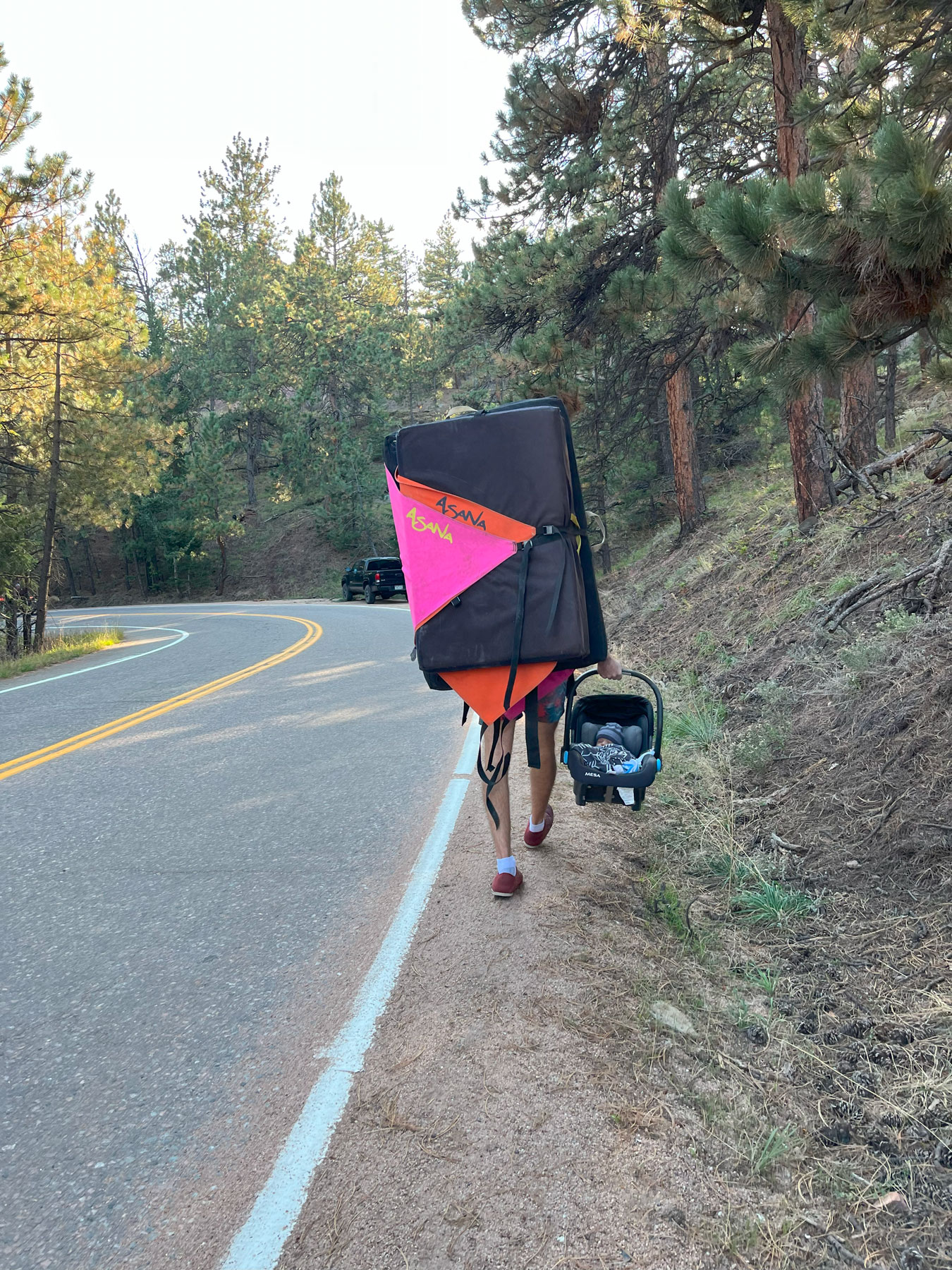
Let’s talk about facts. What are some real hazards of setting through your pregnancy and what are some myths?
Pregnant women are not made of glass. We are not frail, and we are not suddenly incapable of doing what we did before. My workload did not change very much for the first part of my pregnancy. Trust the pregnant setter on your team; we know our bodies, and as climbers, we’ve been learning how to mitigate risk since day one.
The new risk to mitigate is protecting your belly. Falling is a real risk. Obviously blunt force trauma to any part of you isn’t ideal, but during a pregnancy, your belly should be your main concern. The bigger you get, the more your balance point will change. You will begin to lose your core and abdominal muscle strength. Luckily, those things don’t come all at once, so you have time to adjust. Climbers are used to adjusting balance, so a slow change over the course of months will not be an issue.
When I assessed that my fall risks were too great in the later stages of my pregnancy, I stopped setting on a ladder. On ropes, the fall risk is much better mitigated. Aside from giving up setting on the steepest terrain due to the loss of my abdominal muscles, I didn’t change too much.
Do you know any other female routesetter who set through their pregnancy?
Nope. If there’s anyone else, I’d encourage them to be vocal and be a resource.
I agree. Were you worried about discrimination? While pregnant women are protected by the Pregnancy Discrimination Act, I know women are still concerned about their jobs because the PDA doesn’t always mean there will be no discrimination.
I have a two-part answer to that question: yes and no.
I trust the team I work with, and I trust my supervisor. Luckily, I did not feel the need to prove myself during my pregnancy. My team told me they were just happy I was there. My team knew, “Carolina is growing another human right now, and she won’t be able to work as hard as she used to.” I also understand that this response may not be the case for every pregnant routesetter. It is unknown territory.
My supervisor told me, “You’re going to have to pioneer this.” He also did not know any other pregnant routesetters I could turn to. I’m sure there’s been one or two, but they’re so few and far between that they can be hard to find.
I was worried, not because I was scared of discrimination from my employers, but because I was stepping into unknown territory as a routesetter. I stayed alert. I listened to my body.
Do you have any advice for women who are considering starting a family but fear discrimination from their current supervisors or employers?
I’d say it’s time to find yourself a new employer. Know your value.
We paused the interview here and caught up with Fullerton four months after the arrival of her baby to gain more insight on returning to routesetting after welcoming the new family member.
CHEN: How are you?
FULLERTON: Life is great! Being a mom has been the best stage of my life. It’s a crazy roller coaster filled with good days and bad days, but I wouldn’t trade it for the world.
I’ve never felt more in tune with not only myself but also with this new little guy. It’s amazing bringing life into the world.
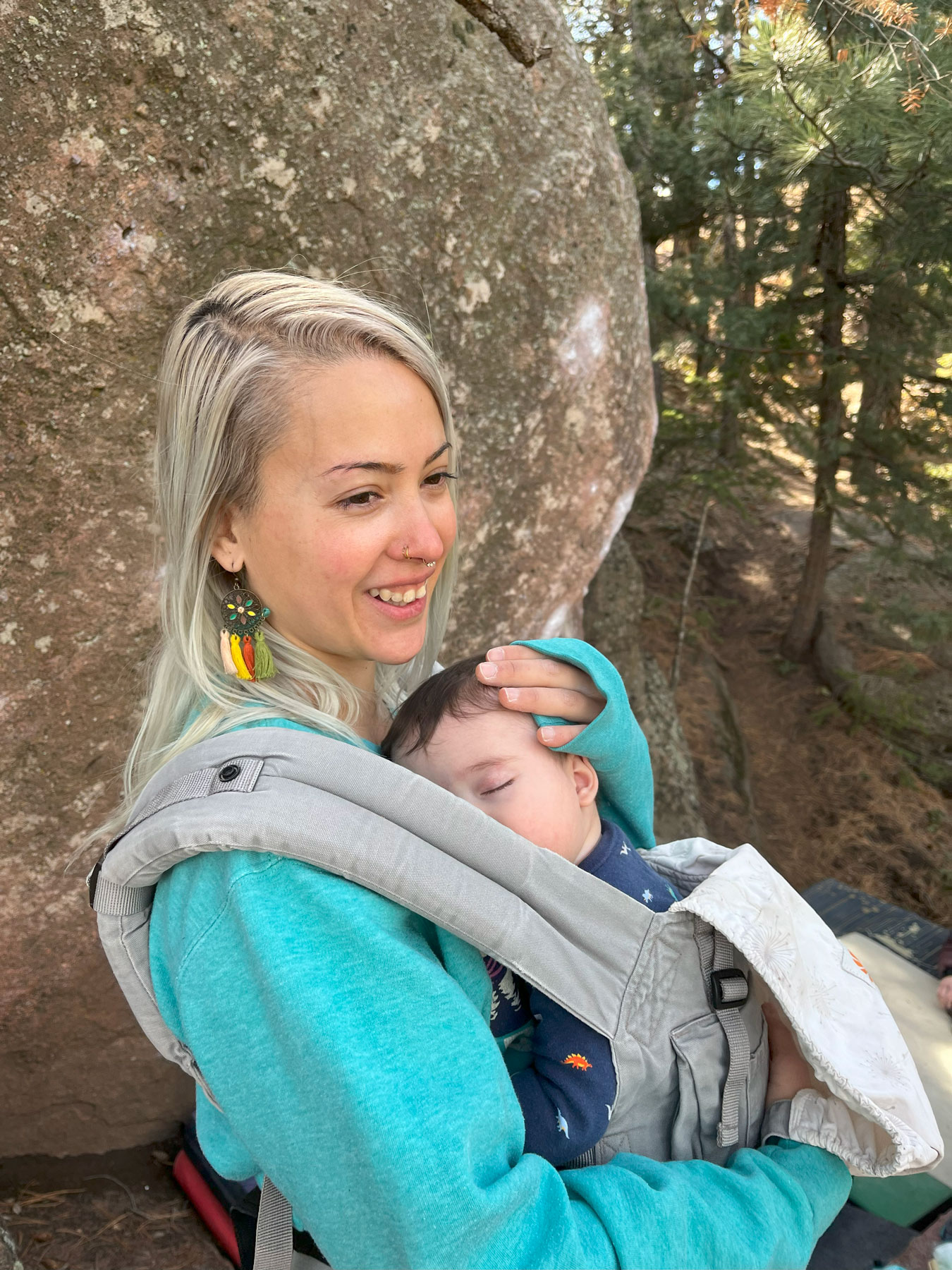
Can you give us some insight on returning to routesetting after giving birth? How has the physical element of the job changed?
Absolutely. Returning was hard; I’m not going to sugarcoat this. There was a lot of anxiety the first three months because I was so engulfed in motherhood that spending time away from my baby was scary. Doubt filled my mind. I wasn’t in shape. They tell you about losing sleep as a new parent, but they can’t truly prepare you for what it’s like. Routesetting is already a hard job, and doing it on 2-4 hours of sleep is almost unimaginable.
I had a C-section, and recovery takes time. My core still doesn’t have the same strength it used to. I was limping from sciatic nerve pain. I made a smart decision and hired a pelvic floor specialist to help guide me along the way. Big shoutout to Heather Fraebel, she’s amazing. My advice here, as usual, is to listen to your body. You know what you need to recover. Climbers are an injury prone group [laughs]. You see a specialist if you popped a tendon or pulled a hamstring badly; you rest and you do everything you can to return to full strength. Recovering from pregnancy—and in my case, a C-section—is the same. Listen to your body!
I’m very open and outspoken and advocate for myself. My key recommendations for other mamas returning to setting: don’t jump in head on, go slow, and give it time.
How was the emotional element upon your return?
I was filled with a bittersweet feeling when I returned to work. Motherhood is work, by the way. It may be unpaid and taken for granted, but it’s the hardest job I’ve ever had. What wouldn’t I do to spend all day with my baby?
I also knew I needed my identity back, to reimagine myself as a climber and a mom. I needed to be able to take care of myself to take care of my baby. Returning to routesetting was a big challenge, but I was up for it. On my first day back, my husband brought my baby to the gym. It was everything I needed.
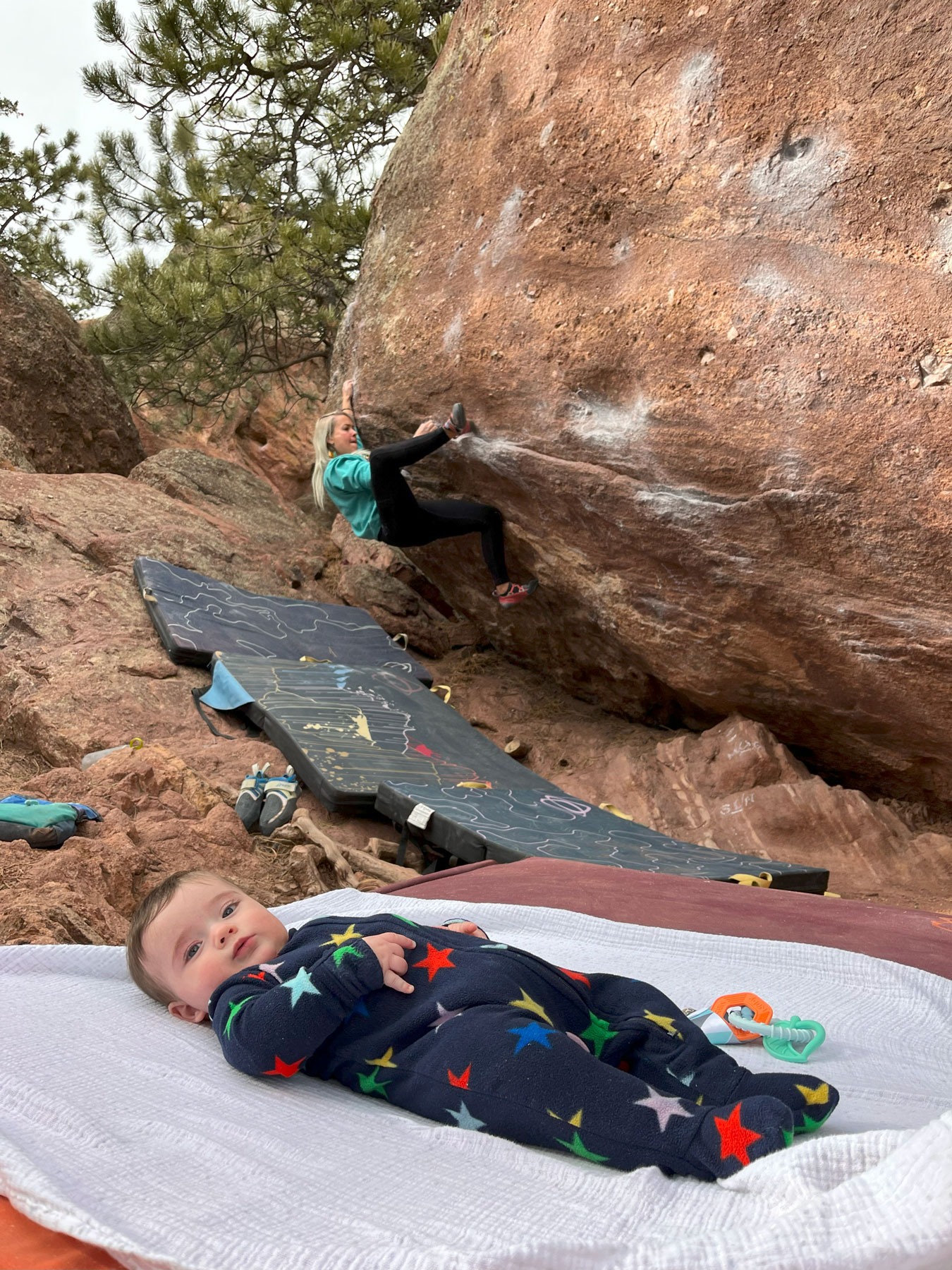
What would you say to every setter out there who wants to become a mother? A parent?
I want to take this opportunity to talk about overcoming obstacles and challenges that could do with more open discussion, even in the non-routesetting or climbing world. Breastfeeding is tough. Hormones are tough. Loosing sleep is tough. Social media puts a big target on you, pressuring women to “bounce back” after giving birth. That’s a crock of bologna.
I’m not worried about bouncing “back.” I just sent my hardest project that took me nine months, and I will never be the person I was before. I’m focusing on becoming a new version of myself.
No one could have put it better. Thank you for sharing that point.

Holly grew up in Taiwan and Hong Kong. Now she lives in Denver where she reports, writes and routesets. Beyond the Climbing Business Journal, her writing has been published by Alpinist Magazine, Climbing Magazine, Gym Climber and Sharp End Publishing. Holly’s motto has always been: “keep it interesting.”
Read our interview with Holly: Storytelling Through Movement




